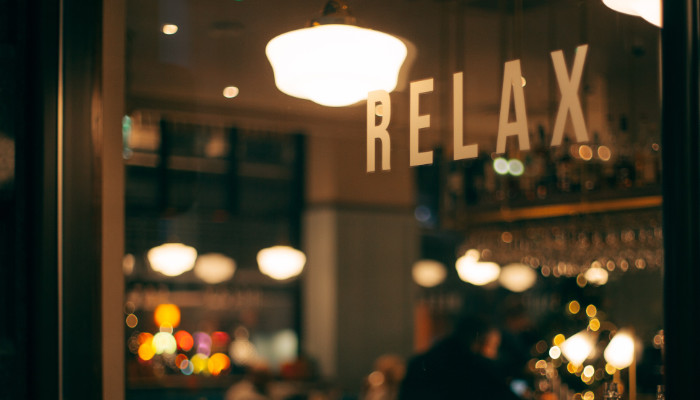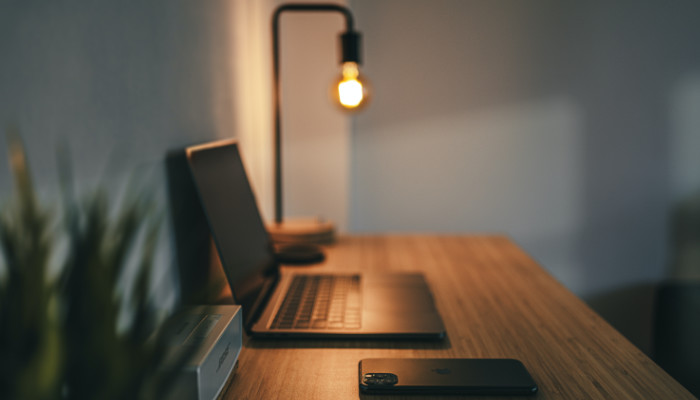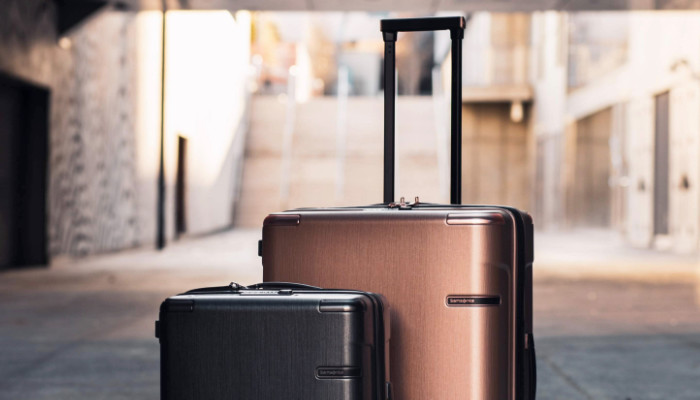Whether you’re a digital nomad or a creator with a work-from-anywhere business, working while traveling is a unique opportunity you shouldn’t waste. For all the good things about it, there are so many productivity challenges involved with trying to get anything done from a non-permanent living space.
How do you stay on top of your work? Here are 7 tips to help you get more done while traveling the world.
Take Yourself Seriously

You’re the only one who can know what you’re thinking and feeling. Don’t allow distractions, social opportunities, or exploration to cut into your working hours too often. If you don’t take your work seriously, no one around you will either.
Remote work frees you up for a lot of new adventures. Embrace the opportunities you have without sacrificing your responsibilities. To manage this balance, observe yourself and understand what makes you tick. Ask questions like:
- Do you work better in the morning, afternoon, or evening?
- What kind of breaks do you need during your workday?
- How many hours can you work productively in a day?
- How many days of work do you need each week?
- How much downtime do you need throughout the week/month?
One of the best things about working remotely is that you can work when, where, and however you want. Why waste that freedom working 9 to 5 if that’s not what helps you thrive?
Don’t force yourself to work and live in a way that doesn’t make sense for you. Pay attention to your body, mental state, and preferences, then base your work around that. Do a weekly check-in with yourself to see how things are going and what you might need to tweak next week.
Develop Working Rituals

The difference between routines and rituals is all about the intention of what you’re doing. While routines focus on getting things done consistently, rituals focus more on transitioning from one mental space to another.
Creating your own rituals means setting up a specific chain of events that lets your body and mind know you’re shifting to something different. In your workday, this can look like a ritual “commute” that helps you get in or out of work mode or a set of activities you do after work to help you disconnect from the stress and refocus on your personal life.
The order of events in your ritual makes a difference. It works best if you establish a few small things to do sequentially, then do them regularly. For example, every morning, you could have your breakfast at the table, then put your coffee in a travel mug to carry over to your desk. Or, you might ritualize closing all the active programs on your laptop once you finish your workday.
It might sound silly, but it’s not a new idea! Rituals have been part of creative work for hundreds, if not thousands, of years. Writers and artists of all kinds were known for their sometimes quirky rituals around their work. Try it out for yourself and see the difference it can make in creating healthy boundaries between your work and the rest of your life.
Plan Downtime

You’re working remotely for a reason. If you’re traveling to new places and trying to see the world while you work, give yourself time for that so you won’t get too restless during your typical workday. There’s a reason you chose the digital nomad life, so take advantage of it!
Instead of hoping you’ll have some free time to explore or enjoy yourself at the end of the day, plan downtime into your day. Give yourself room to breathe and explore new places. If you have specific things you want to do wherever you are, plan your workday around those things, or make a work plan that allows for an extra day off when you want it.
Make a plan that gives you plenty of time to enjoy your life instead of making it all about work.
Prioritize Consistent Workspaces

We all have our different workspace preferences. What kind of environment helps you thrive during your workday? When you’re moving around, plan to stay in places where you can work effectively. Don’t just show up and hope for the best.
The more you know upfront, the less you’ll worry about when you arrive. Consider your options:
Work-Friendly Accommodation
Whether you’re planning to stay in an Airbnb, hostel, rented apartment, or elsewhere, look for a place ideal for remote work. Don’t assume every place will have what you need. Check listings for:
- Desk space or clean table space: Most long-term stay accommodations will have some table or desk space, but you’re looking specifically for an area that’s not used for anything else. While you can work at a kitchen table, having a dedicated space for your work is better, so you don’t have to constantly move your stuff around to use the table space for something else.
- Secluded space for work: Common areas are great for socializing, but you need a workspace that’s not entertainment-focused. If you’re sharing a room with others, such as with a hostel, look for some kind of secluded area away from TVs and other distractions.
- Long-term amenities: If you plan to work out of your accommodation, it’s better to stay somewhere you have a bathroom and kitchen, even if they’re small. Leaving your workspace to go out for everything, even a simple cup of coffee or a snack can lead to you getting distracted more often and losing your flow state.
- Wi-fi & utility access: Never assume wi-fi and power are guaranteed. Ask about access to these things so you can make adjustments as needed.
These are some basics if you want to be able to work where you’re staying, but you can always choose to work outside of your accommodation as well.
Cafes & Public Workspaces
Working in public spaces is an excellent alternative to working at your accommodation. If you’re planning to do most of your work away from your living space, plan to stay in areas with enough public spaces to work effectively. Look for:
- Cafes/coffee shops
- Libraries
- Hotel lobbies
- Malls
- Parks/botanical gardens
- Museums (yes, really!)
Another great option worth looking into is co-working spaces, which are more secluded and consistent than uncertain public amenities or expensive restaurants.
Co-Working Spaces
Many businesses are catering to remote workers today. Consider joining an international co-working company like Regus, WeWork, or Impact Hub. These companies operate in many countries, providing fully-fledged office spaces with internet access, desks, and a peaceful environment for digital nomads and remote workers. Some of these places may give you free coffee as well!
If you have a membership with a company, you can use their offices anywhere in the world for a fixed membership fee. Most of these memberships are around $75-$150 per month. While it sounds like a lot, it’s less than the cost of buying a coffee daily to work in a public space, and it’s a more reliable option where you know you’ll get wi-fi, power, and a calm environment to work.
Plan Your Work Properly

“By failing to plan, you are preparing to fail.” – Benjamin Franklin
Planning means different things to different people. You don’t need to have an hour-by-hour breakdown of everything you’ll be doing (unless that helps you), but it’s helpful to have a way to keep track of your work. Especially when you’re moving around a lot, a work plan will help you get things done consistently without spending too much time remembering what you need to do each day.
Taking up a specific work method to boost your productivity and simplify your regular planning can be helpful. If you know how you’ll work, it’s easy to designate certain tasks for specific times.
Some of the most common productivity techniques for remote workers are:
- Kanban: Visual work management, moving tasks through a process using visual cards
- Pomodoro: Separating your workday into 25-minute chunks of focus work followed by short 10-15 minute breaks
- To-do lists: Listing down all the work projects you need to do, usually broken down into larger projects and sub-tasks involved in those projects
- Flowtime: Similar to Pomodoro, but with no set period of focused work. Pick a task and work on it until you get tired, then take a short break and get back to it.
- Eat the Frog: Do your high-impact tasks first thing in the workday, prioritizing the complex tasks that have to be done
- Deconstruction: Break down your tasks into tiny pieces that you can work on individually
- Must, Should, Want: Sorting tasks into must-do for essentials, should-do for long-term growth, or want-to-do for personal enrichment
- Deep Work: Disconnect from all distractions, including phone and email notifications, and focus exclusively on work for 60-90 minute intervals
Mix and match these methods or come up with something of your own that allows you to work in a way that suits you. Any plan is better than no plan!
Optimize Your Gear

Since you’re working entirely remotely, you can’t afford to skimp out on your essential gear. Ensure you’re getting equipment you can use effectively for as long as you need it. The more time you spend waiting for a slow computer or searching for functional wi-fi, the less time you’ll have to get things done.
What do you really need to work from anywhere?
- Laptop: Long-last battery, lightweight, plenty of memory
- Phone: Multiple SIM slots or a replaceable SIM card, sturdy case for traveling
- Headphones: Strong enough to move around with. Include a headset if you have a lot of virtual meetings to attend
- International plug adaptors: For when you’re traveling internationally, so you can charge your devices anywhere (if those devices don’t have built-in voltage adaptors, make sure the adaptor plugs do)
Depending on the type of work you do, you may need some specialized gear as well, but the basics are constant for more digital nomads and remote workers.
Stay in Place for Longer

Every time you go to a new place, you’ll have to spend time early on getting settled. You’ll have to figure out how to get around, where to shop, how to get internet, etc. Constantly settling in will make it challenging to work on a regular schedule. Instead, plan to spend a little longer in every location.
A good rule of thumb is to spend a minimum of 1 month everywhere you’re going unless you’re taking a short-term vacation. After the first week, you’ll likely settle in enough to work as usual, giving you at least three weeks every month where you’re working at full capacity.
How do you keep yourself on track when hopping between new places? Add your tips in the comments below!


